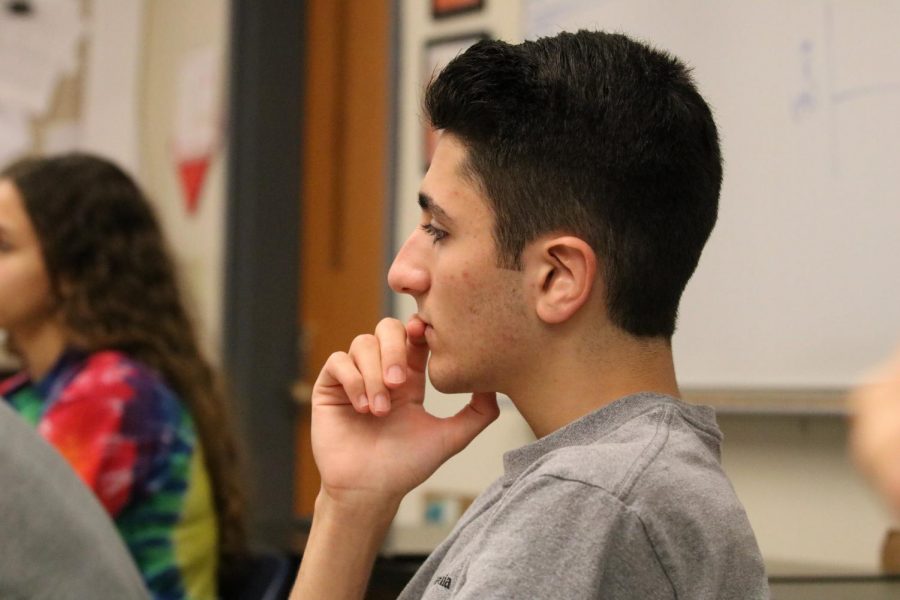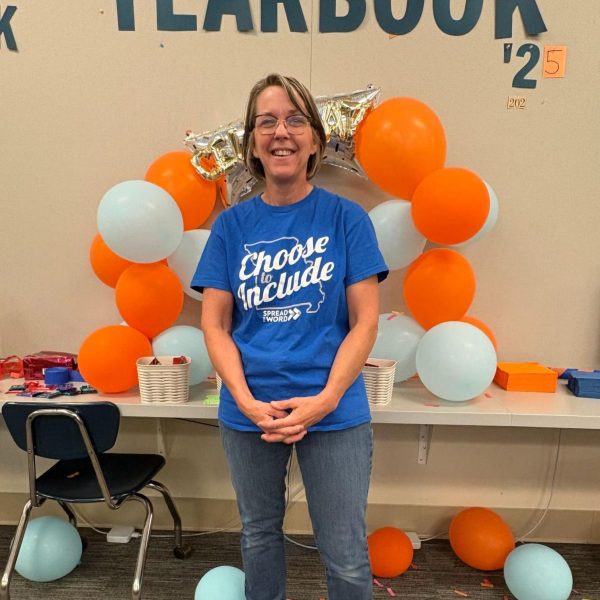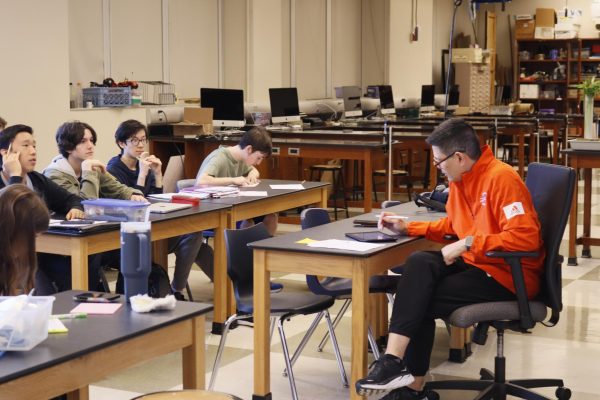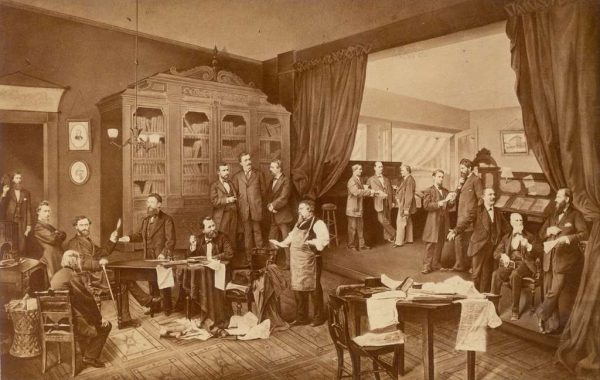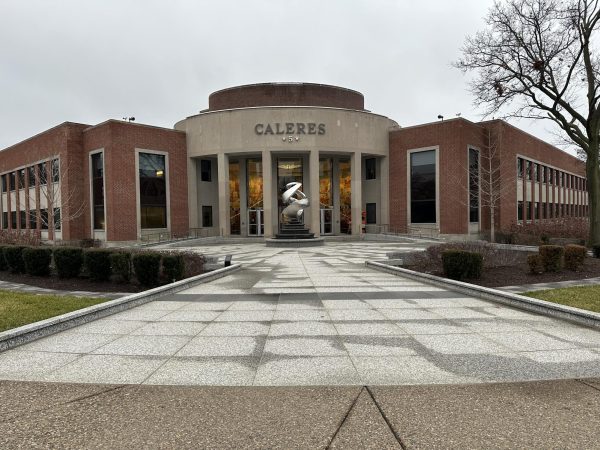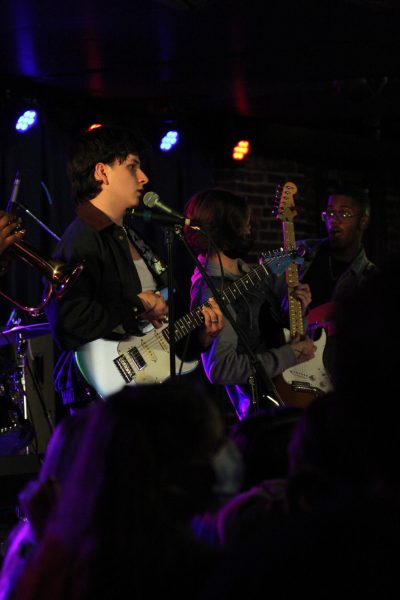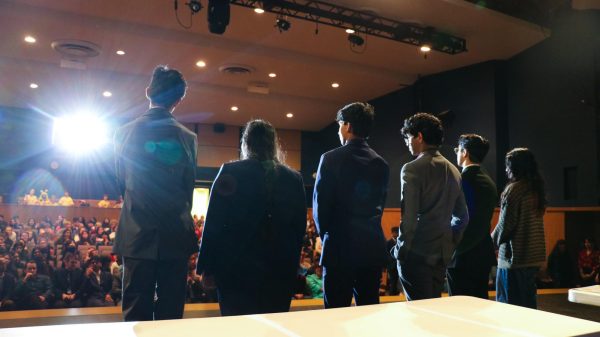Clayton Conversations
Tommy Karandjeff at CHS’s first Clayton Conversation.
“Not just at Clayton High School, but in the country, we have lost the ability to have respectful discourse, and intelligent dialogue around important topics,” said CHS principal Dan Gutchewsky. He believes that students only gain this skill through practice, but whether it is because classes don’t have the time for meaningful dialogue, or because students don’t feel comfortable speaking about controversial topics on their own, at CHS, discussions of important issues rarely take place. Gutchewsky sees this as a major problem.
In an attempt to remedy this issue, Gutchewsky has introduced a new advisory-like program called Clayton Conversations, or C². The program, which was introduced alongside a number of scheduling changes, will divide the school into several “families” containing students from each grade level. Each group will be led by teachers and administrators and will meet once a month to discuss important topics.
“The mission was to set aside time and provide a structure where we could have building-wide conversations around topics that were important to students,” said Gutchewsky.
The structure of the Conversations was inspired by a staff visit to Illinois’ Naperville High School, which provides its students with thirty minutes of free time a month. Gutchewsky saw the benefits of the Naperville plan, but introduced a few changes to tailor it to his own vision for CHS.
“When I looked at Naperville … I liked the structure that they were using, but there was no sense of coherence or kind of a commonality around it. So you could have a really great experience in one class and not do anything particularly meaningful in another,” Gutchewsky said, “And so by providing a little more structure … we can make it a building-wide experience where everybody is kind of engaging in the same way.”
Through both Clayton Conversations and the 15-minute “Greyhound Time”, Gutchewsky hopes to address the student need for both discussion and free time.
Students met with their family groups for the first time in late September, at the only Clayton Conversation so far.
Initial reactions to the Conversation were positive, but many feel there is still room for improvement. “When I was a freshman I didn’t want to be in the same room as seniors” said junior Cece Cohen, “I think [freshman] will be afraid to speak and they won’t feel comfortable.”
Dr. Gutchewsky has already received ideas for future changes. “There have already been requests like, ‘Could we keep the groups the same and just add freshmen to the groups and graduate the seniors out to build a sense of coherence or community?’” Gutchewsky said, “Kind of like a homeroom, or an advisory kind of idea. That’s on the table.”
Gutchewsky also plans to meet with student “facilitators” in an attempt to create more student-led discussions. “Moving forward, we will actually invite students to co-facilitate the conversations … and have them be almost student-driven.” Gutchewesky says, “It’s another way of giving students leadership opportunities.”
Although the Clayton Conversations are just beginning, Dr. Gutchewsky believes that they have immense potential. “There’s the idea that we can increase a sense of student ownership and connection to the place and a sense of community … it never hurts to take a break for 30 minutes in a month and actually do something that isn’t focused on one of your classes.”
A $50 or more donation includes a subscription to the Clayton High School Globe 2024-2025 print news magazine.
We will mail a copy of our issues to the recipients of your choice.
Your donation helps preserve the tangible experience of print journalism, ensuring that student voices reach our community and that student democracy thrives.
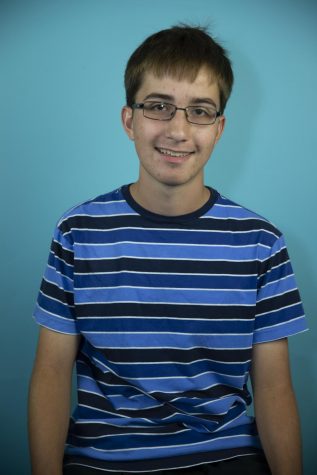
Luka Bassnett is a junior at CHS and is starting his second year as a reporter for the Globe. Luka joined the Globe in his sophomore year as a way to improve his writing skills...
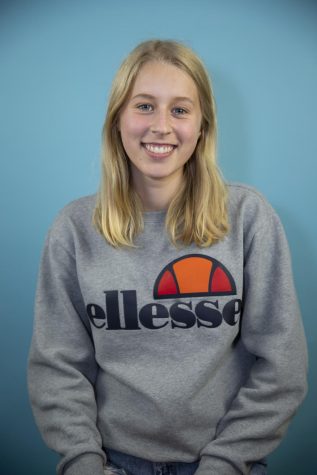
Sofia is a senior and is Editor-In-Chief of the Globe this year. She started Globe because she is interested in writing and exploring different issues in the Clayton community....


